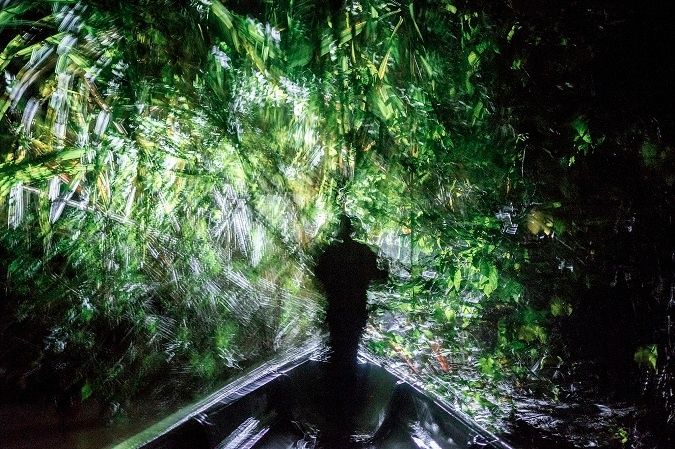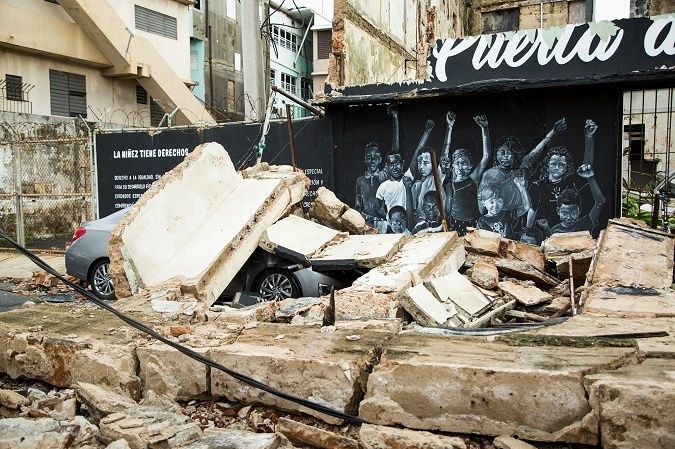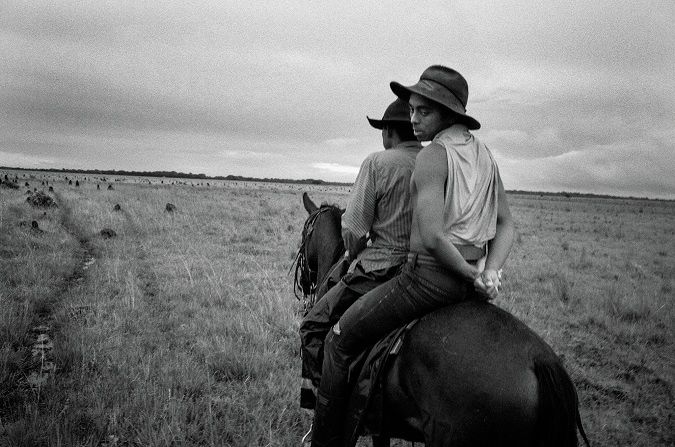The Bronx Documentary Center is putting on the first Latin American Foto Festival to be hosted in the New York City borough, featuring the work of 12 emerging photographers.
RELATED:
Mexico Honors Literary Hero Sergio Pitol in Exhibit
The photography exhibition features Latin American and Caribbean photographers presenting works from their home countries, which include Ecuador, Mexico, Colombia and Guatemala.
Ecuadorean photographer Misha Vallejo told teleSUR he's "really honored" to take part in this festival. The 33-year-old has been featured in the New York Times, but this is his first time exhibiting in the United States.
"What better way to do it than in the Bronx, where the majority are from Latin America?" Vallejo said.
As of last year, 56.5 percent of the borough identified as 'Hispanic or Latino,' according to the U.S. Census Bureau.
"We tried our best to select photographers from countries that are deeply connected with our community and whose work reflected current realities in those countries," co-curators of the festival, Michael Kamber and Cynthia Rivera, told teleSUR.
What To Look For:
Vallejo is exhibiting his long-term project, 'Secret Sarayaku.' The Sarayaku, an Indigenous community located in Ecuador's Amazon, believe that "everything is alive and has a spirit, and is interconnected with each other," Vallejo says.

For this project, the photographer tries to visually depict the Sarayaku's worldview of interconnectedness and collective harmony they call 'sumak kawsay' in the community's native Kichwa language. 'Good life,' in English, becomes 'buen vivir' in Spanish.
"I visually explore this philosophy," a philosophy and phrase — sumak kawsay — that he says former President Rafael Correa's government was co-opting and using to its political advantage when Vallejo began the photographic project in 2012.
When Vallejo first visited the community, the Sarayaku had just won a protracted international lawsuit against Ecuador's government for drilling for oil in their ancestral lands without prior consultation. There were already tensions between the Sarayaku when "the government began using the term 'buen vivir' to its advantage," Vallejo says, which is "totally different" from the community's worldview.
Puerto Rican photographer Erika P. Rodriguez, also selected to take part in this borough-wide exhibit, is presenting her project 'The Oldest Colony.' Featured in the New York Times, it "depicts Hurricane Maria's aftermath and slow recovery" in Puerto Rico. Her photographs were taken in the first days after the category five storm hit the island in September 2017 and months into its clean-up.
The 29-year-old, San Juan-based photographer says her island exists "in a type of limbo/gray-area, where we are Latin American, but politically an unincorporated territory of the United States, and reclaiming our space and being represented is important."
Like Vallejo, Rodriguez says she feels honored to take part in the Bronx Documentary Center and New York's first Latin American Foto Festival.
They were both surprised to learn this was the first festival of its kind in New York in "an area heavily populated by Latinos," says Rodriguez, noting the show enables her "to keep the conversation about Puerto Rico alive."
"Maria was 10 months ago and things have gone back to a new normal for many, but there are still 50,000 people with temporary blue-tarp roofs, over 1,000 households without power and some without water," she says.

"The hurricane is one layer of hardships that are affecting us. We are still facing the worst economic crisis in history and the future only seems to hold austerity and migration. It is hard to see light at the end of the tunnel in some ways.
"My job is to bring Puerto Rico and its people to the table, remind people that we are still here. People need to be represented."
The center "wants to show how these photographers reflect cultural, social and political issues in the Caribbean and throughout Latin America," say the curators, Rivera and Kamber.
"We want to show visitors the beauty, scope and breadth of the photography movement in Latin America."
The festival is not only affording public space to the people and places depicted in the images, but also to the young photographers themselves.
"The (photography) industry is quite big here in the United States, especially in New York," Vallejo told teleSUR from Quito. "This is a really interesting and important chance."

Other exhibiting artists include Sharon Castellanos, who depicts rural areas of her native Peru in black and white. Emmanuel Guillen Lozano is showing 'Blackness,' which "tries to show the dark and blurred scenes" of violence in Mexico's 12-year 'war on drugs.'
Political Ambience
The Bronx Documentary Center (BDC) show, open until July 22, is on display throughout the Melrose neighborhood. Installations appear not only within the center, but also along city sidewalks, in storefront windows, in galleries and churches in order to reach a wider audience.
"We want to help broaden people's understanding of social issues and events in other countries that they may not have been aware of," say Rivera and Kamber. The BDC estimates 50,000 residents and visitors will see tour the photographic projects.
Rodriguez said the exhibit acted as a cultural anchor: "Latin Americans in the United States get to see themselves and their home countries on the walls, represented – spaces of comfort, love and ownership are important to create."
Rodriguez and Vallejo feel the show is important and timely considering the current social and political climate in the United States: "The festival adds a counter-narrative to that of the official," says Rodriguez.
"Recognizing diversity and celebrating it instead of demonizing communities are at the heart of living and building a society that is unified, instead of afraid."
Vallejo is more explicit: "It's brave to do this festival in this political mess in the United States (with) a president that is clearly xenophobic, hates immigrants and says that we come from shithole countries."
Separating families trying to enter the United States through Mexico is inhumane and that "as a society we should speak up about these injustices.
"For me, that's not the United States. The United States is a melting pot where cultures from all over the world come and co-exist and build something really good for their future.
"As usual, media and photography are good to attract people's attention to see things from a different perspective."
The Bronx Documentary Center is already at work creating its second annual Latin American Foto Festival.